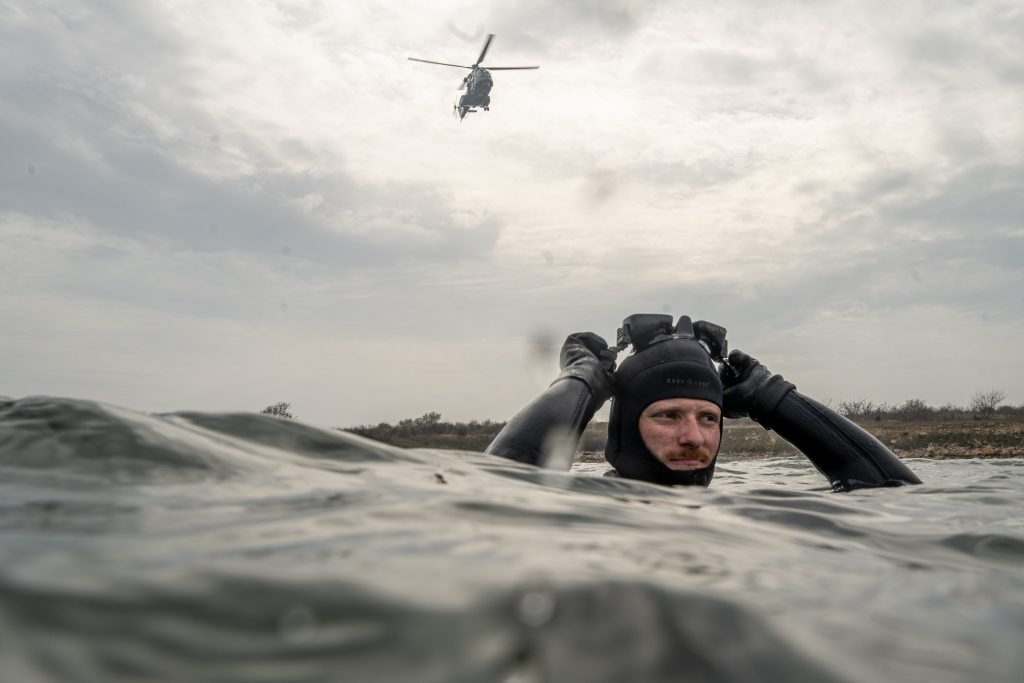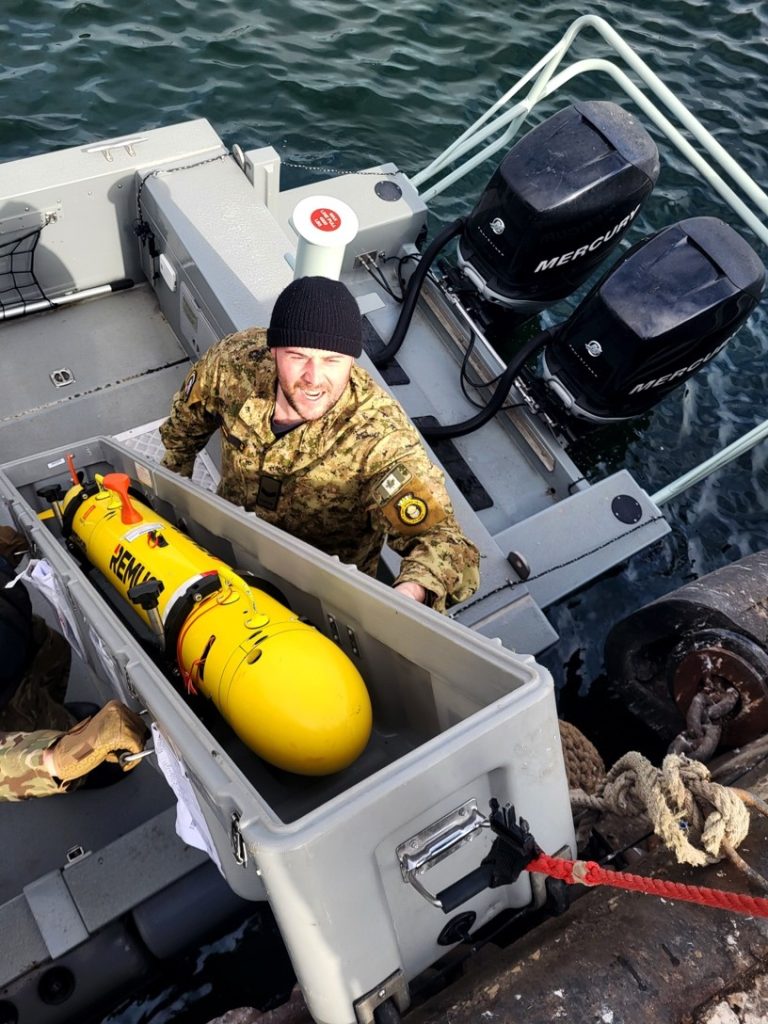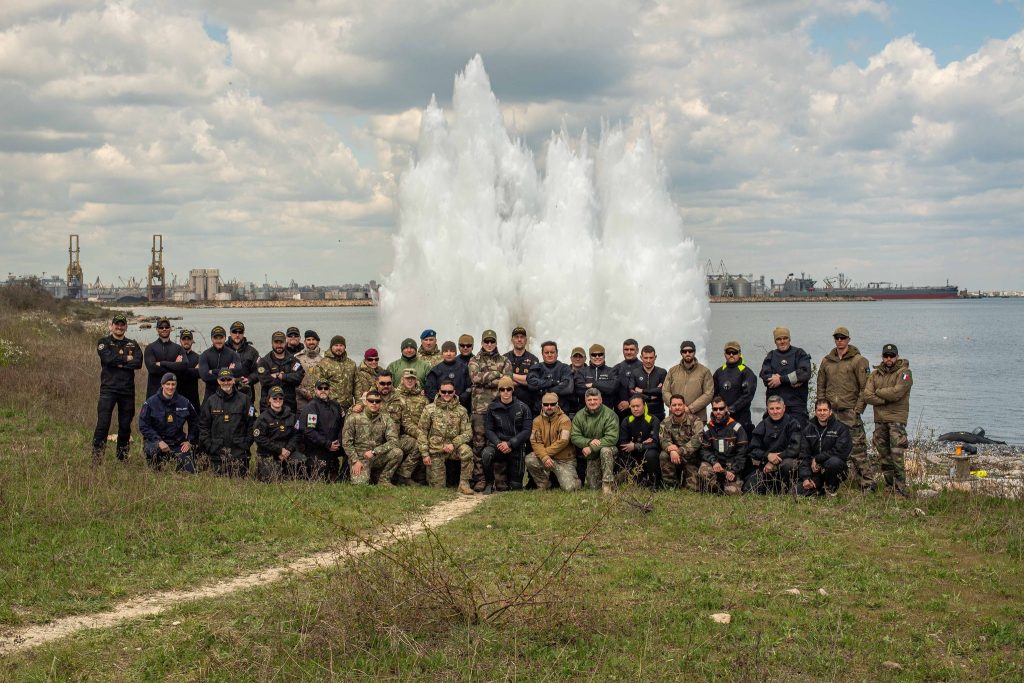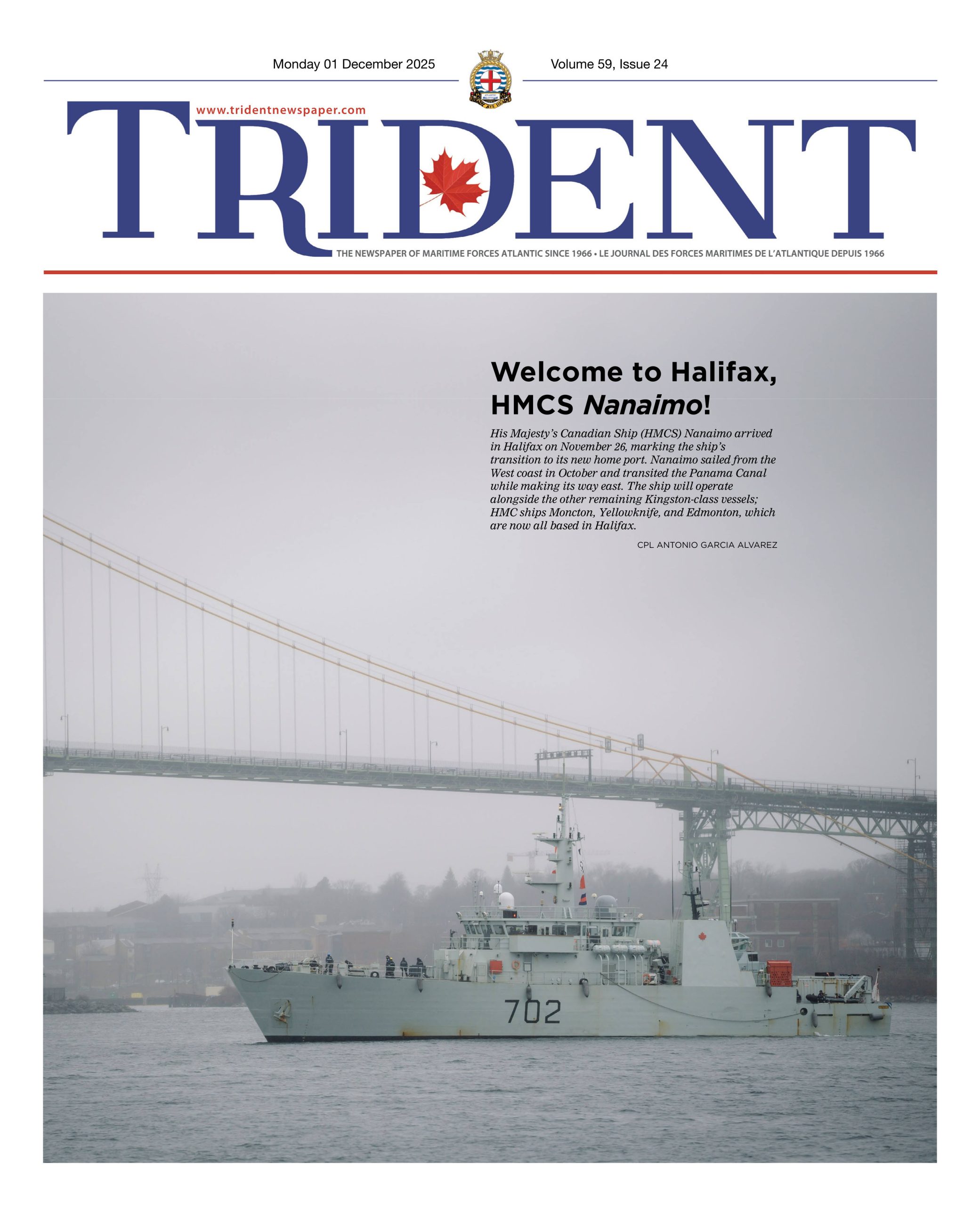
PO2 ED JORGE
Nova Scotians on the front lines of mine countermeasures in the Black Sea
By MARLANT Public Affairs

LT(N) ANDREW MCLAUGHLIN
Two Royal Canadian Navy (RCN) sailors from Nova Scotia are among the Canadian Armed Forces personnel currently deployed to Romania as part of the Mine Countermeasures (MCM) Black Sea Task Force, operating under Operation Reassurance. Both Sailor First Class (S1) Chris Betts and S1 James Roper serve with Fleet Diving Unit (Atlantic), and each is applying specialized expertise to support NATO efforts to detect and neutralize underwater threats.
S1 Betts, from Enfield, Nova Scotia, is a graduate of Hants East Rural High School who joined the Canadian Army in 2017 as a Combat Engineer. In 2019, he successfully completed the Combat Diver Course and later transferred to the RCN in 2021 to become a Clearance Diver. He says he wanted to put his passion for fitness and teamwork into practice, and he’s doing just that – supporting an important mission as an elite RCN Clearance Diver and Explosives Ordnance Disposal (EOD) operator while deployed overseas.
“I played a lot of hockey growing up and always enjoyed being part of a successful team. This is the best team I’ve been on yet.”
He’s part of an approximately 15-person team sent to Romania as part of Operation Reassurance – MCM Black Sea Task Force. His team’s mission is to increase interoperability with regional allies and to develop and share best practices for countering the drifting sea mine threat in the region.
His job as a Clearance Diver and EOD operator involves executing complex operations that integrate helicopters, surface craft, and both sea and ground-based autonomous and remotely operated vehicles, such as drones and robots, to locate, identify, and safely neutralize sea mines, either by disarming or detonating them to eliminate the threat. The inherently dangerous task of disarming explosive devices becomes even more challenging when carried out underwater, often at significant depths and in conditions of near-zero visibility.
“When we’re tasked to either investigate or to disarm an explosive device, the years of hard training really kick in,” he says. “We can deal with a wide variety of targets in a safe and effective way.”
The team uses high-tech sonar equipment and intelligence data to find the location and identify the type of mine that’s been detected, or other unexploded munitions (UXO) which often wash up on beaches. The divers are then transported to that area by helicopter, small boat, or ground vehicle, where they neutralize the threat using high explosives of their own in a highly choreographed operation.
“It’s a huge team effort, and the people that make up this unit are a bunch of beauties.”
Working alongside Clearance Divers like S1 Betts are sonar specialists who provide the intelligence needed to identify targets and plan safe interventions. One of those specialists is S1 James Roper.

PO2 ED JORGE
S1 Roper, a native of Sydney, Nova Scotia and graduate of Sydney Academy High School, joined the RCN in 2019. He wanted to put his passion for tech into practice, and is now supporting an important mission as a Sonar Operator.
He is part of a three-person Sea-Bed Intervention System (SBIS) team who operate the Remote Environmental Monitoring Units (REMUS 100). This Autonomous Underwater Vehicle (AUV) can be deployed from many types of watercraft, including the RCN’s new Outboard Engine Dive Boat. During this operation, which will take place episodically over 2025, the SBIS team has launched their AUV from the Romanian Navy mine hunter Sublocotenent Ion Ghiculescu (M270), which formerly served as a British Royal Navy vessel before being transferred to Romania.
“It’s been a great experience operating from the M270,” says James. “Putting our skills to use on an international operation in support of allies is very exciting.”
The REMUS 100 is a compact, lightweight AUV designed for operations in coastal environments that uses a side-scan sonar to detect anomalies on the sea floor, like sea mines, which can then be safely disposed of.
“We’re part of a bigger team that has to work closely together,” he says.
The Sonar Operators compile and analyze the acoustic intelligence information from REMUS to be used by Clearance Divers and Explosive Ordnance Disposal specialists to dispose of identified mines.
“Basically, we detect and plot the position of underwater threats and report the information so they can be safely dismantled or detonated.”
The Canadian Armed Forces (CAF) is contributing to the MCM Black Sea Task Group as part of the broader Operation Reassurance – Canada’s commitment to NATO deterrence and defence measures in Central and Eastern Europe. Working together with Allied forces and navies reinforces the CAF’s dedication to interoperability, demonstrating an important capability that enhances regional partners’ ability to clear waters of sea mines.






